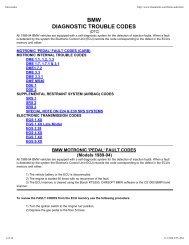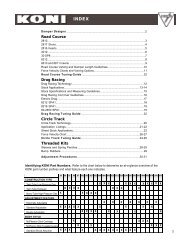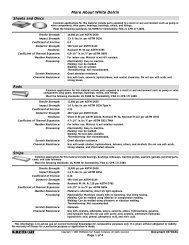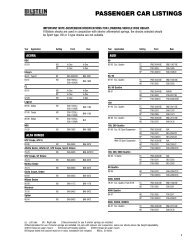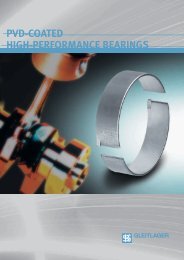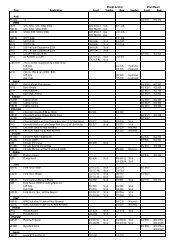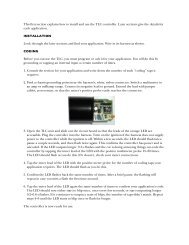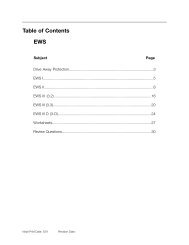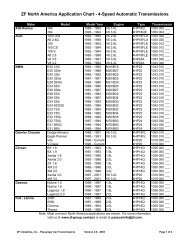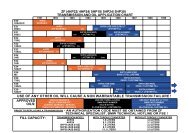Table Of Contents
Table Of Contents
Table Of Contents
Create successful ePaper yourself
Turn your PDF publications into a flip-book with our unique Google optimized e-Paper software.
Fuel System Monitoring is an<br />
OBD II requirement which monitors<br />
the calculated injection time<br />
(ti) in relation to engine speed,<br />
load, and the pre catalytic converter<br />
oxygen sensor(s) signals as<br />
a result of the residual oxygen in<br />
the exhaust stream.<br />
The ECM uses the pre catalyst<br />
oxygen sensor signals as a correction<br />
factor for adjusting and<br />
optimizing the mixture pilot control<br />
under all engine operating<br />
conditions.<br />
Adaptation Values are stored by the ECM In order to maintain an "ideal" air/fuel ratio.<br />
The ECM is capable of adapting to various environmental conditions encountered while the<br />
vehicle is in operation (changes in altitude, humidity, ambient temperature, fuel quality, etc.).<br />
The adaptation can only make slight corrections and can not compensate for large<br />
changes which may be encountered as a result of incorrect airflow or incorrect fuel supply<br />
to the engine.<br />
Within the areas of adjustable adaption, the ECM modifies the injection rate under two<br />
areas of engine operation:<br />
• During idle and low load mid range engine speeds (Additive Adaptation),<br />
134100100.eps<br />
• During operation under a normal to higher load when at higher engine speeds<br />
(Multiplicative Adaptation).<br />
These values indicate how the ECM is compensating for a less than ideal initial air/fuel ratio.<br />
NOTE: If the adaptation value is greater than "0.0 ms" the ECM is trying to richen the mixture.<br />
If the adaptation value is less then "0.0 ms the ECM is trying to lean-out the mixture.<br />
74<br />
MS S54 Emissions Management



